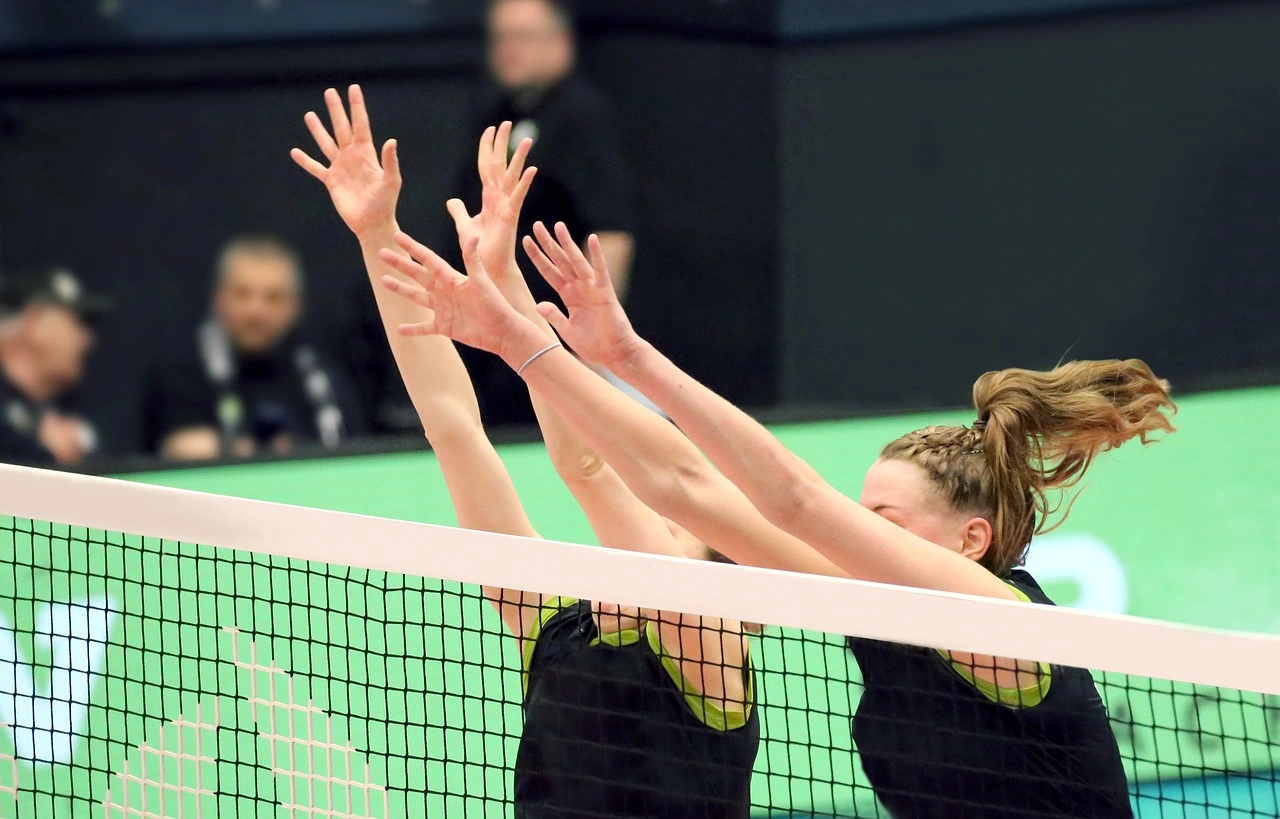
Blocking
Volleyball is a dynamic and fast-paced sport that demands a combination of skills, teamwork, and strategy. One crucial aspect of the game that can turn the tide in your team's favor is blocking. A well-executed block can not only deny your opponents a point but also boost your team's morale. In this article, we will explore the fundamentals of blocking in volleyball, from the basic techniques to advanced strategies.
Understanding the Basics
Blocking in volleyball is a defensive move that aims to intercept or deflect the ball hit by the opposing team before it crosses the net. A well-timed and effective block can result in a point for your team and disrupt the rhythm of your opponents. Here are the fundamental aspects of blocking:
1. Body Position
Proper body positioning is essential for an effective block. Stand with your feet shoulder-width apart, knees slightly bent, and weight on the balls of your feet. Keep your hands ready and your eyes on the setter to anticipate the direction of the attack.
2. Timing
Timing is everything in blocking. You must jump at the right moment to meet the ball at its peak. This requires excellent timing and coordination with your teammates. Communicate with your fellow blockers to ensure a well-timed jump.
3. Hand Placement
Your hands and fingers play a critical role in blocking. Reach high above the net and position your hands to cover as much space as possible. Your fingers should be spread wide, and your palms should be angled slightly downward to deflect the ball back into the opponent's court.
4. Penetration Over the Net
One of the keys to effective blocking is penetrating the net. This means reaching over the net and into the opponent's side of the court as much as the rules allow. By doing so, you reduce the available angles for the attacker, making it more challenging for them to score.
Blocking Techniques
There are two primary blocking techniques in volleyball: the solo block and the double block. Let's delve into each of them:
Solo Block
A solo block is when one player attempts to block the ball by themselves. This technique is usually reserved for situations where there's only one attacker or when your team has a height and skill advantage. To perform a successful solo block, you must rely on your jumping ability, timing, and reading the opponent's attack.
Double Block
The double block is a more common and effective blocking technique. In a double block, two players work together to block the attacker's shot. This technique provides more coverage and increases the chances of a successful block. To execute a double block effectively, communication is key. Both players need to jump simultaneously and coordinate their hand placement to form a solid barrier.
Advanced Blocking Strategies
While the basics of blocking are essential, advanced strategies can take your blocking game to the next level. Here are some advanced techniques and tactics to consider:
1. Reading the Setter
Great blockers can anticipate the setter's decisions. By closely watching the setter's body language and the positioning of their hands, you can better predict where the ball will be set. This allows you to move into the right position for an effective block.
2. Commit Block vs. Soft Block
A "commit block" is when you fully commit to blocking the ball, leaving little room for the attacker to send it around you. This can be effective against powerful hitters. On the other hand, a "soft block" involves blocking the ball while still being ready to transition quickly for defense. Soft blocks are useful when facing crafty hitters who can tip the ball over the block.
3. Adjusting to the Attack Angle
Smart attackers may try to exploit the gap between the blockers or hit around the sides. As a blocker, you need to adjust your hand positioning and angle to cover these potential attack angles. Keep in mind that you must stay within the rules, and touching the net is not allowed.
4. Closing the Block
After penetrating the net, focus on closing the block. This means bringing your hands together to create a solid wall. The goal is to press the ball back into the attacker's court or deflect it to your back-row defenders. Closing the block effectively reduces the attacker's options.
Teamwork and Communication
Blocking is a team effort, and communication is vital. Effective blocking relies on coordination with your teammates, especially when executing a double block. Here are some tips for better teamwork and communication:
1. Call the Setter
As a blocker, you can call out the setter's name to alert your teammates about the potential direction of the attack. This helps your fellow blockers prepare for a well-timed jump.
2. Use Signals
Teams often use hand signals or calls to indicate the type of block they intend to execute. For example, you can use a signal to indicate a commit block, a soft block, or an adjustment in hand positioning.
3. Maintain Eye Contact
Keep eye contact with your fellow blockers to ensure everyone is on the same page. This non-verbal communication is crucial for synchronizing your movements and timing.
Conclusion
Blocking in volleyball is a critical skill that can greatly influence the outcome of a match. Mastering the art of blocking requires a combination of fundamental techniques, advanced strategies, and effective teamwork. By practicing and honing your blocking skills, you can become a valuable asset to your volleyball team and make a significant impact on the game. So, get out on the court, work on your timing and coordination, and be a formidable force at the net!